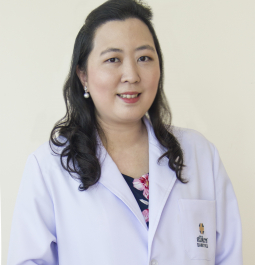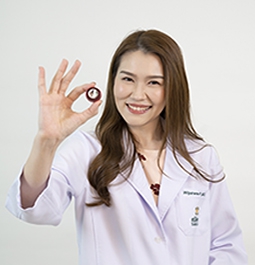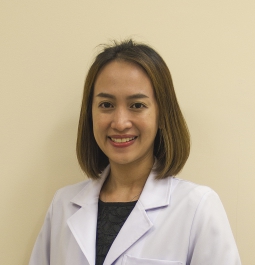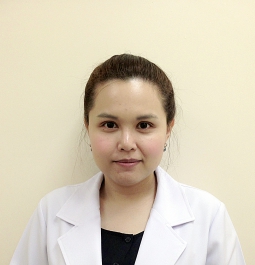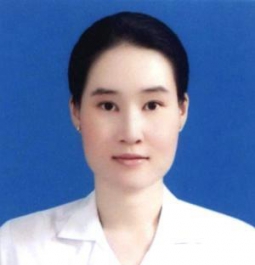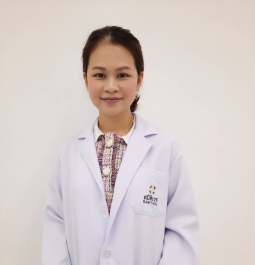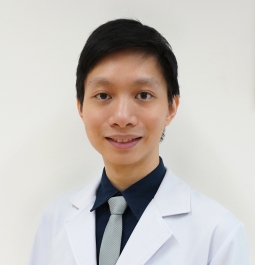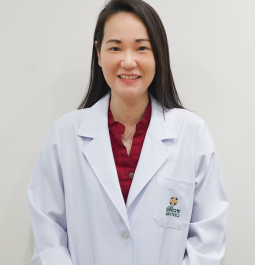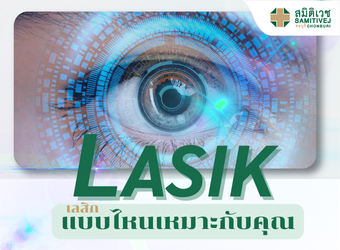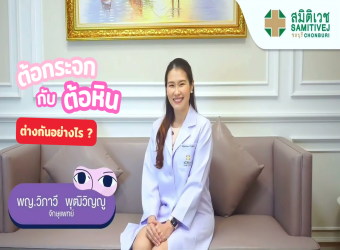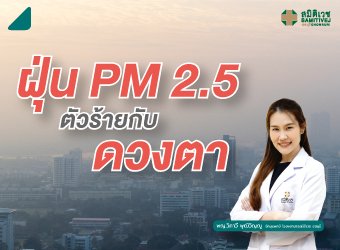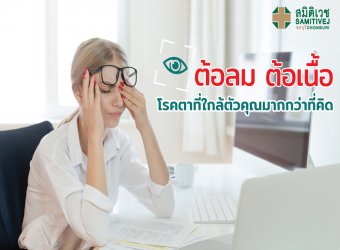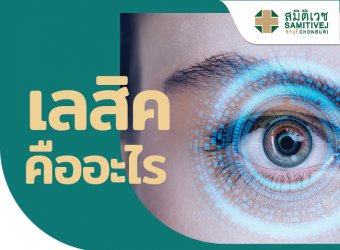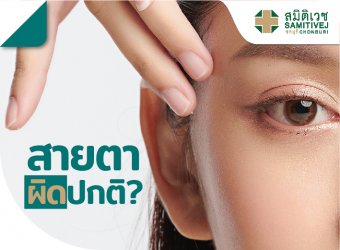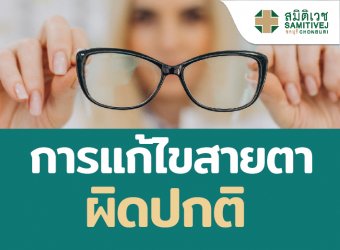Eye Diseases in the Elderly: What You Need to Know
(Eye Center) article author : Wipawee Puthiwinyoo, M.D.
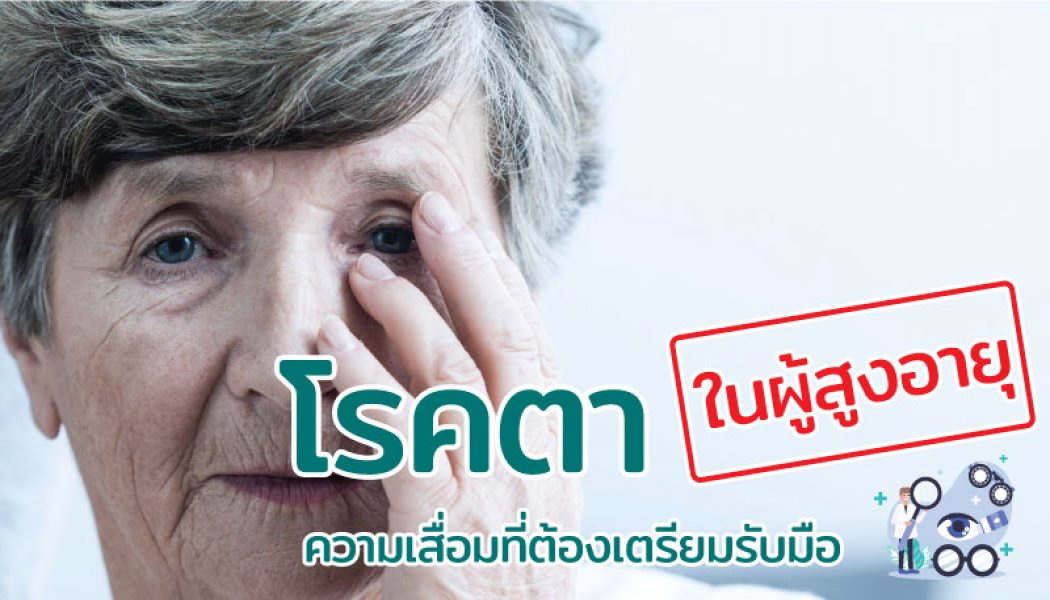
As we age, we cannot avoid the natural decline of our bodies which can include a variety of eye problems. For many people, eyesight can begin to decline from around the age of 40 and then continue to worsen as we get older. This can result in deteriorating vision and an increase risk of specific eye diseases developing.
Five Eye Diseases That Commonly Occur in the Elderly:
1. Presbyopia
Presbyopia can affect anybody over the age of 40. It is caused by a weakening of the eye muscles and an inflexibility of the eye lenses. This creates difficulty in viewing objects close-up, resulting in the need to read or view things from a greater distance. It also slows down the eyes’ ability to adjust their focus. This can lead to headaches and eye strain. Treatments include prescription reading glasses, which reduce the strain on the eyes, or by laser surgery.
2. Cataracts
Cataracts can develop in all individuals as the lenses in the eyes deteriorate with age. Although Cataracts occur in everyone, it is only the more severe cases that result in symptoms requiring treatment. Cataracts occur when the lens hardens and gradually becomes cloudy. This can result in symptoms that include blurred vision, distorted colours, double vision, sensitivity to bright light and can lead to difficulties driving, especially at night. Treatment requires surgery to remove the damaged lens and replace it with a permanent artificial prescription lens.
3. Glaucoma
Glaucoma is a serious condition that can result in a permanent loss of vision. Glaucoma damages the optic nerve due to high eye pressure. Because the symptoms of Glaucoma are often very subtle people may not seek treatment until their vision has started to deteriorate meaning the disease is already advanced. There is also an acute form of Glaucoma, known as Angle-Closure Glaucoma, the symptoms of which maybe severe eye pain, redness, blurred vision, seeing halos around lights, headaches, nausea and vomiting.
Individuals at risk of Glaucoma include those aged over 40, individuals with a family history of Glaucoma, those with a history of corticosteroid use, those with extreme nearsightedness or farsightedness, and those who have experienced eye injuries. Glaucoma can also result from other conditions such as diabetes, migraines or sleep apnea.
4. Age-Related Macular Degeneration (AMD)
AMD occurs when the central part of the retina deteriorates. The retina is the part of the eye responsible for receiving images. This condition often progresses with age and is most prevalent in individuals aged 60 and above.
It poses a serious risk of permanent vision loss. Symptoms include blurred vision, distorted images, and dark spots or shadows in the center of a person’s sight. Currently, there is no cure for AMD, so early detection is vital to allow for the provision of appropriate eye care management. AMD is a disease that requires prompt treatment by an ophthalmologist to manage and prevent worsening vision that may disrupt the quality of life.
5. Dry eyes
Dry eyes is a common eye condition often seen in the elderly. It is caused by a reduction in both the quantity and the quality of tears produced resulting in poor moisturisation of the eyes. There are a number of causes including abnormal tear production, excessive tear evaporation, age-related tear gland dysfunction, blocked oil glands in the eyelids, abnormal eyelid structure such as drooping or turning in or out. Other causes may include hormonal changes, or other conditions such as thyroid disorders, diabetes, arthritis or the side effects of certain medications. Symptoms include eye irritation, discomfort, a sensation of grittiness, intermittent blurred vision and occasionally, corneal abrasions can occur leading to significant discomfort, worsening vision, and potential accidents.
It is essential for the elderly to maintain good eye health. This can be achieved through regular and thorough eye screening allowing for the early detection and treatment of eye conditions in order to prevent or delay vision loss and to reduce the risk of accidents. Prioritising both eye and general health is important in maintaining a good quality of life and overall happiness.


